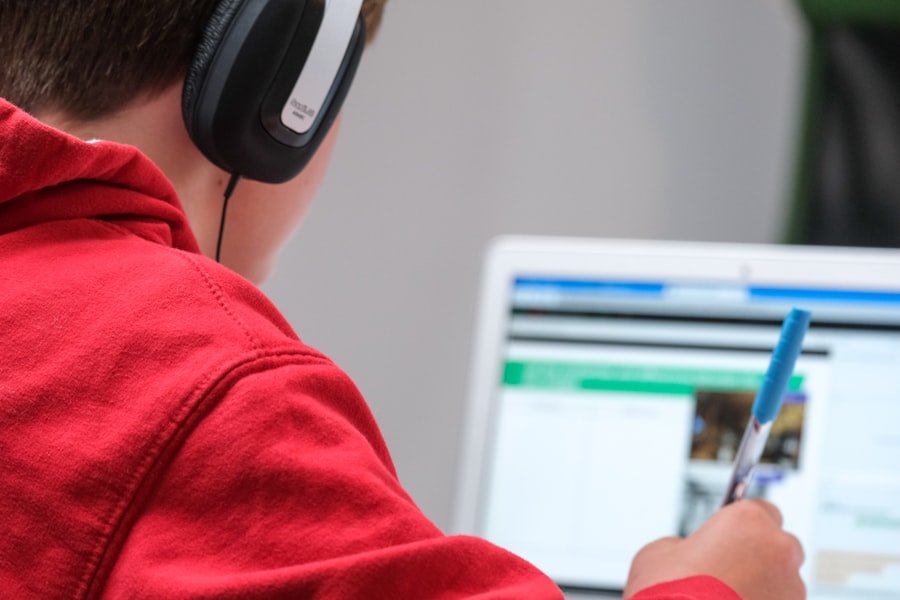
Establishing clear and achievable goals is a fundamental step in the language learning process. Without a defined target, learners may find themselves drifting aimlessly, which can lead to frustration and a lack of progress. Goals should be specific, measurable, attainable, relevant, and time-bound (SMART).
For instance, instead of vaguely stating, “I want to learn English,” a more effective goal would be, “I want to be able to hold a 15-minute conversation in English about my hobbies within three months.” This specificity not only provides direction but also allows learners to track their progress over time. Moreover, setting short-term and long-term goals can help maintain motivation. Short-term goals might include mastering a set number of vocabulary words each week or completing a chapter in a language textbook.
Long-term goals could involve achieving fluency or preparing for an English proficiency exam like the TOEFL or IELTS. By breaking down the language learning journey into manageable milestones, learners can celebrate small victories along the way, which reinforces their commitment and enthusiasm for the process.
Key Takeaways
- Setting clear and achievable goals is essential for effective language learning.
- Immersing yourself in English language and culture through activities like watching movies and reading books can greatly improve language skills.
- Utilize various learning resources such as language learning apps, online courses, and language exchange programs to enhance your learning experience.
- Regular practice with native English speakers can help improve fluency and pronunciation.
- Improving vocabulary and grammar skills through consistent practice and exposure to the language is crucial for language development.
Immersing Yourself in English Language and Culture
Exposure to Conversational English
Watching popular television shows like “Friends” or “The Crown” is an excellent way to gain insights into cultural nuances and idiomatic expressions commonly used in everyday conversations. This exposure not only helps you learn conversational English but also deepens your understanding of the language.
Practicing in Real-Life Contexts
Engaging with native speakers and participating in cultural events can provide opportunities to practice speaking and listening skills in real-life contexts. Attending local English-speaking meetups or cultural festivals can help you internalize the language more naturally.
Internalizing the Language
This kind of immersion helps learners to internalize the language more naturally, as they begin to associate words and phrases with their meanings in context rather than relying solely on translation.
Utilizing Various Learning Resources

The landscape of language learning resources is vast and varied, offering numerous tools to cater to different learning styles. Traditional resources such as textbooks and workbooks remain valuable, but digital platforms have revolutionized how learners access information. Language learning apps like Duolingo, Babbel, and Rosetta Stone provide interactive exercises that make learning engaging and fun.
These platforms often incorporate gamification elements, which can motivate learners to practice regularly by earning points or unlocking new levels. In addition to apps, online courses and video tutorials on platforms like Coursera or YouTube can provide structured learning paths. For instance, a learner might choose a course focused on business English to improve their professional communication skills.
Podcasts are another excellent resource; they allow learners to listen to native speakers discussing various topics, which can improve listening comprehension and expose them to different accents and dialects. By diversifying their resources, learners can find what resonates best with them and keeps their interest alive.
Practicing Regularly with Native English Speakers
| Metrics | Results |
|---|---|
| Number of practice sessions per week | 5 |
| Improvement in fluency | 20% |
| Confidence in speaking | High |
| Understanding of colloquial expressions | Better |
Regular practice with native speakers is crucial for developing fluency and confidence in speaking. Engaging in conversations with those who speak English as their first language allows learners to experience authentic dialogue, which is often filled with colloquialisms and cultural references that textbooks may not cover. Language exchange programs or conversation clubs can provide structured environments for this practice.
Websites like Tandem or HelloTalk connect learners with native speakers who are interested in language exchange, allowing both parties to benefit from the interaction. Moreover, practicing speaking regularly helps learners overcome the fear of making mistakes. Many language learners struggle with anxiety when speaking, often worrying about pronunciation or grammatical errors.
For example, participating in a weekly discussion group can create a sense of community where mistakes are viewed as part of the learning process rather than failures. This supportive atmosphere encourages learners to take risks with their language use, ultimately leading to greater fluency.
Improving Vocabulary and Grammar Skills
A robust vocabulary and solid grammar foundation are essential components of effective communication in any language. To enhance vocabulary, learners should engage in active reading—this involves not just passively reading texts but also taking notes on new words and phrases encountered. Keeping a vocabulary journal can be particularly beneficial; learners can write down unfamiliar words along with their definitions and example sentences.
This practice not only reinforces memory but also encourages learners to use new vocabulary in their writing and speaking. Grammar skills are equally important for clear communication. While many learners may find grammar rules daunting, breaking them down into manageable parts can make them more approachable.
Online resources such as Grammarly or Purdue OWL offer explanations and exercises that cater to different levels of proficiency. Additionally, practicing grammar through writing—whether it be journaling or composing essays—allows learners to apply rules in context. For instance, writing a short story using specific grammatical structures can reinforce understanding while also fostering creativity.
Seeking Feedback and Correction

Feedback is an invaluable aspect of the language learning process. It provides learners with insights into their strengths and areas for improvement. Actively seeking feedback from teachers, tutors, or language partners can help identify specific issues that may not be apparent to the learner themselves.
For example, a learner might think they are pronouncing words correctly but may not realize they are making subtle errors that affect comprehension. Constructive criticism from a native speaker can highlight these areas for improvement. In addition to verbal feedback, written corrections on assignments or practice exercises can also be beneficial.
Many online platforms offer opportunities for peer review, where learners can exchange written work and provide feedback to one another. This collaborative approach not only enhances learning but also fosters a sense of community among learners. By embracing feedback as a tool for growth rather than viewing it as criticism, learners can cultivate a more positive attitude towards their language journey.
Using Technology to Enhance Learning
The integration of technology into language learning has opened up new avenues for engagement and practice. Language learning apps have become increasingly sophisticated, offering personalized learning experiences based on individual progress and preferences. For instance, some apps use artificial intelligence to adapt lessons according to the learner’s strengths and weaknesses, ensuring that they receive targeted practice where it is most needed.
Moreover, online platforms facilitate access to authentic materials that were previously difficult to obtain. Websites like BBC Learning English or TED Talks provide high-quality content that exposes learners to diverse topics while improving listening skills. Virtual reality (VR) technology is also emerging as a tool for immersive language experiences; VR applications can simulate real-life scenarios where learners must use English in context, enhancing both comprehension and speaking skills in an engaging manner.
Staying Motivated and Persistent in Language Learning
Maintaining motivation over the long term is one of the greatest challenges faced by language learners. The initial excitement often wanes as the reality of consistent practice sets in. To combat this decline in motivation, it is essential for learners to regularly revisit their goals and remind themselves of the reasons they began their language journey in the first place.
Creating a vision board or writing down personal motivations can serve as visual reminders of what they hope to achieve. Additionally, incorporating variety into the learning routine can help sustain interest. This could involve exploring different aspects of the culture associated with the language—such as cooking traditional dishes from English-speaking countries or participating in local events related to English culture.
Celebrating milestones along the way—whether it’s completing a course or successfully conversing with a native speaker—can also provide motivation to continue pushing forward despite challenges. By fostering a resilient mindset and embracing the journey as much as the destination, learners can cultivate persistence that will ultimately lead to success in mastering the English language.
If you are interested in improving your English language skills through real-life conversations, you may want to check out this article on asking someone out on a date. Engaging in dialogues about relationships and social interactions can help you practice speaking and listening in English. Additionally, discussing health-related topics or talking about going to church can provide you with valuable vocabulary and phrases to use in everyday conversations.
FAQs
What are the benefits of learning the English language?
Learning the English language can open up a world of opportunities, including better job prospects, easier travel, access to a wealth of literature and media, and the ability to communicate with people from diverse backgrounds.
What are some effective methods for learning English?
Effective methods for learning English include immersing oneself in the language through activities such as watching English-language movies and TV shows, listening to English music and podcasts, practicing speaking with native speakers, and taking formal language classes.
How long does it take to learn English fluently?
The time it takes to learn English fluently varies depending on factors such as the learner’s native language, the amount of time dedicated to learning, and the individual’s language learning abilities. Generally, it can take several years to become fluent in English.
What are some common challenges in learning English?
Common challenges in learning English include mastering the complex grammar rules, pronunciation, and vocabulary, as well as overcoming the fear of making mistakes when speaking or writing in English.
What are the different levels of English language proficiency?
The Common European Framework of Reference for Languages (CEFR) divides English language proficiency into six levels: A1 (beginner), A2 (elementary), B1 (intermediate), B2 (upper-intermediate), C1 (advanced), and C2 (proficient).



